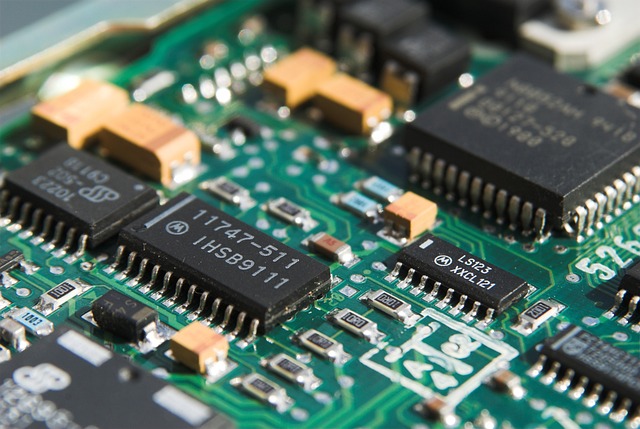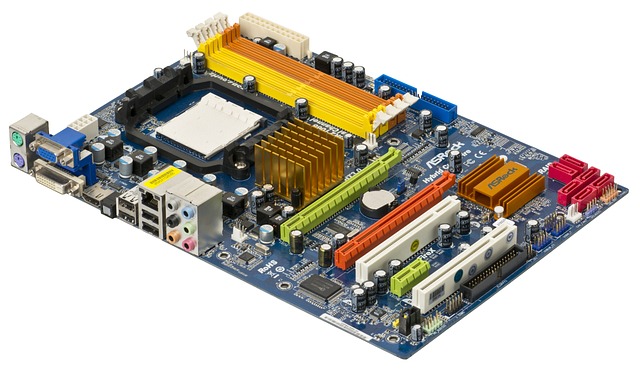Time: 2024-01-22 15:59:03View:
In the context of technology and engineering, "cores" can refer to various concepts, but in the realm of digital design and integrated circuits, cores typically denote pre-designed and pre-verified intellectual property (IP) blocks that serve specific functions. These cores are often used in the development of complex digital systems, such as microprocessors, digital signal processors, communication interfaces, and more.
Processor cores, for example, are fundamental components of modern computing devices, serving as the central processing unit (CPU) that executes instructions and performs calculations. Digital signal processing (DSP) cores are specialized for manipulating digital signals, such as audio, video, and sensor data, and are commonly used in applications like telecommunications, audio processing, and image processing. Communication interface cores facilitate the exchange of data between different components or systems, enabling connectivity through standards such as USB, Ethernet, HDMI, and more.
Cores are designed, verified, and often licensed by semiconductor companies or IP vendors, and they are intended to be integrated into larger digital designs. For instance, a microcontroller design might incorporate a processor core, memory cores, and various interface cores to create a complete system-on-chip (SoC) solution. Similarly, a digital signal processing application might utilize DSP cores alongside memory and interface cores to form a comprehensive signal processing system.
The use of cores allows designers to leverage pre-designed functionality while still having the flexibility to customize and optimize the overall system to meet specific application requirements. This approach enables the rapid development and deployment of complex digital systems, as designers can focus on integrating and configuring cores to create highly tailored and application-specific solutions. Overall, cores play a crucial role in the development of modern digital systems, providing a foundation for efficient and scalable design in various domains, including consumer electronics, telecommunications, automotive, industrial automation, and more.

In the realm of digital design and integrated circuits, there are various types of cores that serve specific functions and are essential building blocks for creating complex digital systems. These cores are pre-designed and pre-verified intellectual property (IP) blocks that can be integrated into larger designs to provide specialized functionality. Some common types of cores include processor cores, digital signal processing (DSP) cores, memory cores, and communication interface cores.
Processor cores are fundamental components of computing systems, serving as the central processing unit (CPU) that executes instructions and performs calculations. These cores come in various architectures and configurations, ranging from simple microcontrollers to complex multi-core processors. They are used in a wide range of applications, from embedded systems and consumer electronics to high-performance computing and servers.
Digital signal processing (DSP) cores are specialized for manipulating digital signals, such as audio, video, and sensor data. These cores are designed to perform tasks such as filtering, modulation, demodulation, and spectral analysis. They are commonly used in applications such as telecommunications, audio processing, image processing, and control systems.
Memory cores are designed to provide storage and retrieval of digital data within a digital system. These cores can include various types of memory, such as random-access memory (RAM), read-only memory (ROM), flash memory, and cache memory. Memory cores are essential for storing program instructions, data, and intermediate results within a digital system.
Communication interface cores facilitate the exchange of data between different components or systems. These cores enable connectivity through standards such as USB, Ethernet, HDMI, PCIe, and more. They are used to interface with external devices, networks, and peripherals, allowing for the transfer of data in various formats and protocols.
These types of cores are designed, verified, and often licensed by semiconductor companies or IP vendors. They are intended to be integrated into larger digital designs to provide specialized functionality. The use of cores allows designers to leverage pre-designed functionality while still having the flexibility to customize and optimize the overall system to meet specific application requirements. This approach enables the rapid development and deployment of complex digital systems, as designers can focus on integrating and configuring cores to create highly tailored and application-specific solutions. Overall, the availability of different types of cores plays a crucial role in the development of modern digital systems, providing a foundation for efficient and scalable design in various domains, including consumer electronics, telecommunications, automotive, industrial automation, and more.
FPGA processor cores are a form of intellectual property (IP) and can be classified into three standard types: soft, firm, or hard. Soft cores are processor implementations in an HDL language without extensive optimization for the target architecture. They generally exhibit lower performance and are less efficient in terms of resource utilization. On the other hand, firm cores are also HDL implementations but have been specifically optimized for a target FPGA architecture. Next, I will talk about the advantages and disadvanges of soft and hard cores sequently.
Soft cores, as processor implementations in an HDL language without extensive optimization for the target architecture, offer several advantages and disadvantages in the context of FPGA design.
One of the key advantages of soft cores is their flexibility. Since they are implemented in HDL, such as Verilog or VHDL, they can be easily customized and adapted to specific application requirements. Designers have the freedom to modify the core's functionality, add custom instructions, or integrate peripheral interfaces tailored to their application, providing a high degree of flexibility and customization.
Additionally, soft cores are often portable across different FPGA platforms. This means that the same soft core design can be implemented on various FPGA devices from different manufacturers, offering versatility and compatibility. This portability can be advantageous in scenarios where a design needs to be migrated to a different FPGA device or when working with multiple FPGA vendors.
However, soft cores also come with certain disadvantages. One of the primary drawbacks is their potential for lower performance and efficiency compared to firm or hard cores. Since soft cores are not extensively optimized for a specific FPGA architecture, they may consume more resources and exhibit lower clock speeds, leading to reduced performance in certain applications.
Moreover, the development and verification of soft cores can be more time-consuming and complex compared to using pre-optimized firm or hard cores. Designers are responsible for ensuring that the soft core implementation meets the performance, timing, and resource utilization requirements of the target FPGA device, which can require significant effort and expertise.
In summary, while soft cores offer flexibility and portability, they may suffer from lower performance and increased development complexity. Designers must carefully weigh these advantages and disadvantages when considering the use of soft cores in FPGA designs, taking into account the specific requirements and constraints of their target applications.

Hard cores, as processor implementations that are part of the silicon design of an FPGA, offer several distinct advantages and disadvantages in the context of FPGA design.
One of the key advantages of hard cores is their high performance and efficiency. Since hard cores are specifically designed and integrated into the FPGA silicon during manufacturing, they are optimized for the target architecture, resulting in superior performance and resource utilization. This optimization can lead to higher clock speeds, lower power consumption, and better overall efficiency compared to soft or firm cores.
Additionally, hard cores often come with extensive support and validation from the FPGA manufacturer. This can include comprehensive documentation, software development tools, and technical support, which can streamline the design and development process. Designers can leverage this support to expedite the integration of hard cores into their FPGA designs and benefit from the manufacturer's expertise in utilizing these cores effectively.
However, hard cores also have certain disadvantages. One notable drawback is their lack of flexibility. Since hard cores are fixed in the FPGA silicon, they cannot be easily modified or customized to meet specific application requirements. This lack of flexibility can be a significant limitation in scenarios where custom functionality or specialized features are needed, as designers are constrained by the capabilities of the hard core.
Moreover, hard cores may be tied to specific FPGA devices or families, limiting their portability across different platforms. This lack of portability can pose challenges when migrating designs to new FPGA devices or when working with multiple FPGA vendors, as the hard cores may not be compatible or readily available across different platforms.
In summary, while hard cores offer high performance, efficiency, and manufacturer support, they may lack the flexibility and portability of soft or firm cores. Designers should carefully consider these advantages and disadvantages when evaluating the use of hard cores in FPGA designs, taking into account the specific requirements and constraints of their target applications.
The applications of cores in Field-Programmable Gate Arrays (FPGAs) are wide-ranging and have significant implications across various industries and technologies. Cores, which are pre-designed and pre-verified intellectual property (IP) blocks, play a pivotal role in enabling the efficient development and deployment of complex digital systems within FPGA-based designs.
One notable application of cores in FPGAs is in the domain of embedded systems. FPGAs equipped with embedded processor cores, such as ARM Cortex-M series cores, find utility in a diverse array of applications, including industrial automation, automotive electronics, consumer electronics, and Internet of Things (IoT) devices. These embedded cores facilitate the implementation of customized control logic, signal processing, and interfacing capabilities within a single FPGA device, offering a versatile platform for developing embedded systems tailored to specific application requirements.
In the realm of digital signal processing (DSP), cores are extensively utilized for tasks such as filtering, modulation, demodulation, and spectral analysis. FPGAs featuring DSP cores are employed in applications such as wireless communications, radar systems, medical imaging, and audio processing. The flexibility of FPGAs allows for the integration of custom DSP algorithms alongside standard DSP cores, enabling the implementation of highly optimized and application-specific signal processing solutions.
Furthermore, communication interface cores are integral to FPGA-based designs, facilitating seamless data exchange between different components or systems. FPGAs with communication interface cores support a wide array of industry-standard protocols, including USB, Ethernet, HDMI, PCIe, and more. These cores enable FPGAs to interface with external devices, networks, and peripherals, making them well-suited for applications in networking equipment, data acquisition systems, video processing, and high-speed data communication.
Moreover, memory cores are essential for providing storage and retrieval of digital data within FPGA-based systems. These cores encompass various types of memory, such as RAM, ROM, flash memory, and cache memory, and are utilized in applications requiring data storage, program execution, and data buffering. FPGAs with memory cores are employed in diverse applications, including real-time processing, data logging, image and video storage, and high-performance computing.
In summary, the applications of cores in FPGAs are extensive and diverse, spanning embedded systems, digital signal processing, communication interfaces, and memory management. The versatility and reconfigurability of FPGAs, coupled with the availability of specialized cores, make them a compelling platform for developing customized and high-performance digital systems across a broad spectrum of industries and technologies.